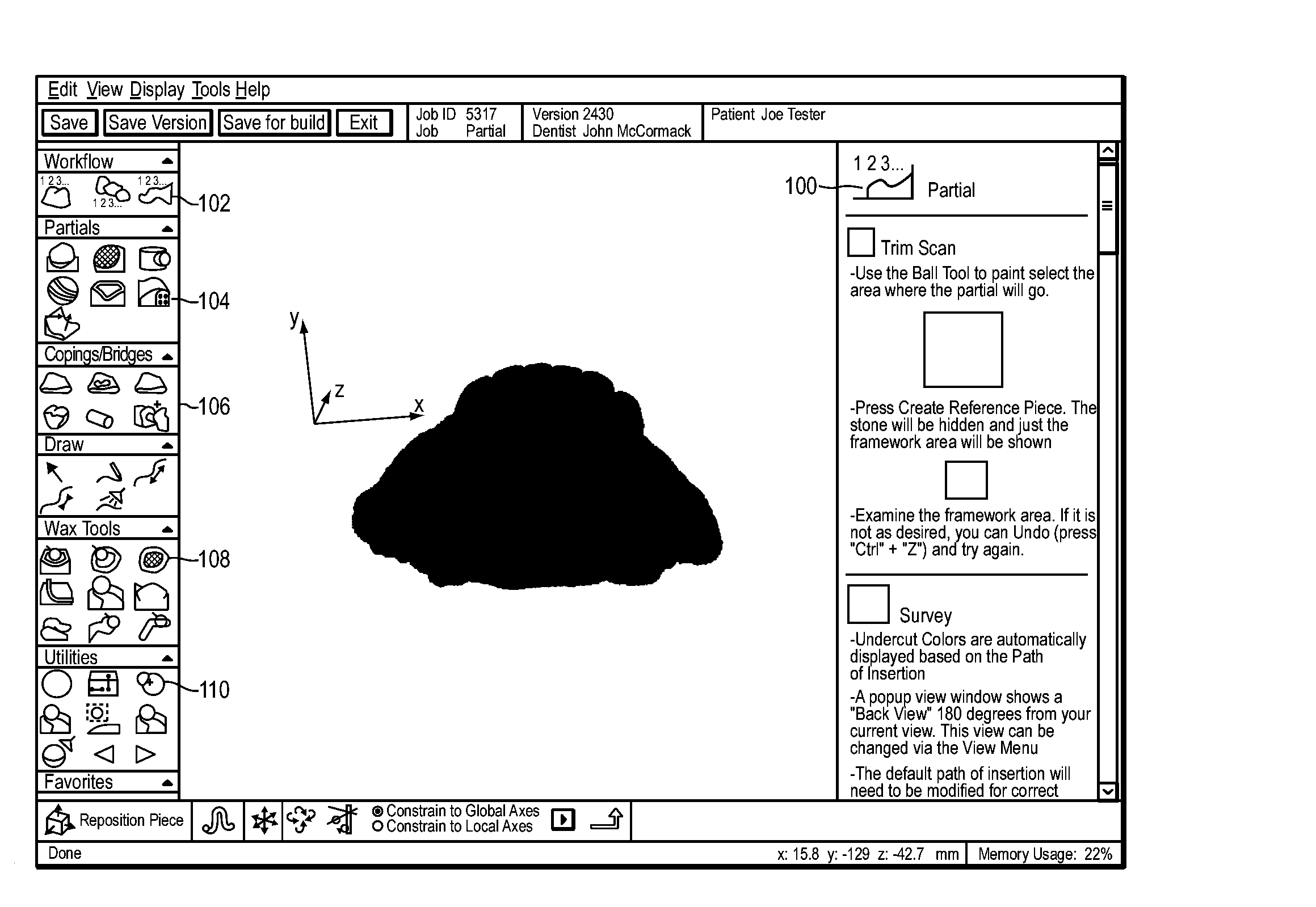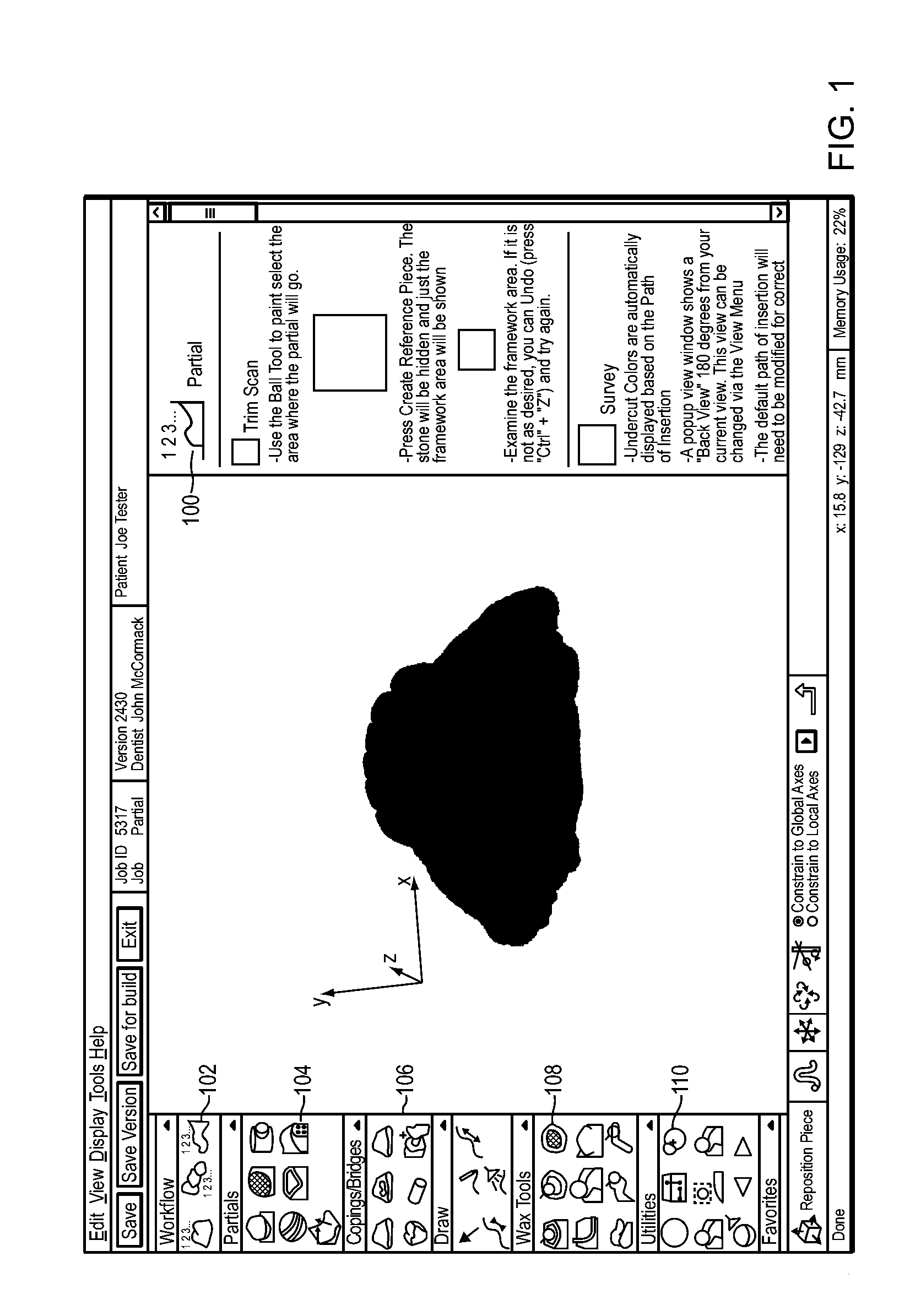Haptically enabled dental modeling system
a technology of dental modeling and haptic enablement, applied in dental surgery, instruments, manufacturing tools, etc., can solve the problems of many labs having only very basic capital equipment, requiring a great deal of manual dexterity, and labor-intensive traditional dental laboratory methods
- Summary
- Abstract
- Description
- Claims
- Application Information
AI Technical Summary
Benefits of technology
Problems solved by technology
Method used
Image
Examples
second embodiment
[0117]In a second embodiment, the workflow wizard may be implemented as a set of modified help files (which can be implemented in a mark up language such as html or xml) with links to the relevant tools. The user can click on the headings of the text to move around in the workflow, and the corresponding tools and objects will be activated. By clicking sequentially through the tasks, the user can finish a design from beginning to end. Each step / section of the workflow wizard should outline what to do in this step of the workflow, with clearly indicated links which activate the right tool or perform the right function or macro.
[0118]FIG. 1 illustrates this modified help file approach, where the Workflow Wizard for Partial Frameworks 100 is on the right hand side of the screen.
[0119]In this second embodiment, the wizards are designed to be loose and optional on purpose. Novice users or users doing a repeatable workflow may elect to follow the wizards in their creation of dental restora...
third embodiment
[0203]In a third embodiment, the user may use the haptic device to draw the final margin line. One way to do this is to click points on the margin line while touching the scan model to enter sample points. A NURBS curve may then be fit through the clicked points using a least squares fit mechanism to closely represent the geometry on the scanned model. Fitting a curve tightly to a tolerance may be iterative and can take a long time. Various tricks may be used to improve the interactivity of this step, including using a loosely fit curve during the initial definition state for a coarse fit, and doing a fine fit as a batch process before exiting the margin line definition phase.
5.6.2 Approaches for Automatic Margin Line Detection
[0204]In one embodiment, the margin line may be determined by a view-apparent silhouette finding algorithm. Given a path of insertion and a well-ditched model, and a model that is segmented close to the preparation line, the entire margin line should be visibl...
PUM
| Property | Measurement | Unit |
|---|---|---|
| Angle | aaaaa | aaaaa |
| Time | aaaaa | aaaaa |
| Thickness | aaaaa | aaaaa |
Abstract
Description
Claims
Application Information
 Login to View More
Login to View More - R&D
- Intellectual Property
- Life Sciences
- Materials
- Tech Scout
- Unparalleled Data Quality
- Higher Quality Content
- 60% Fewer Hallucinations
Browse by: Latest US Patents, China's latest patents, Technical Efficacy Thesaurus, Application Domain, Technology Topic, Popular Technical Reports.
© 2025 PatSnap. All rights reserved.Legal|Privacy policy|Modern Slavery Act Transparency Statement|Sitemap|About US| Contact US: help@patsnap.com



